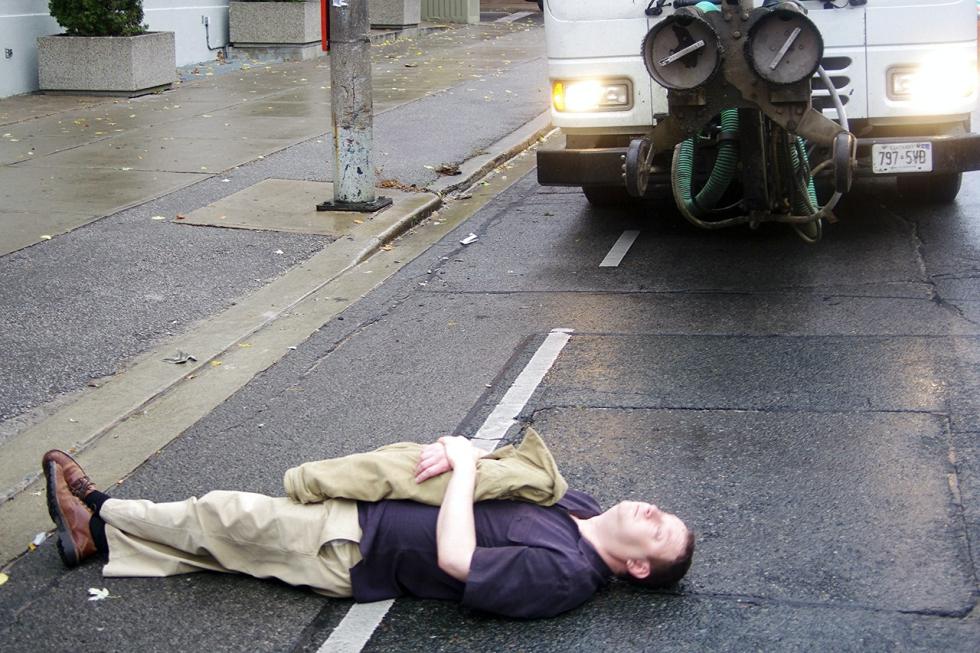Here in the Pioneer Valley, bikes and biking are part of the fabric of daily life. People come from miles away to roll along the long bike path. Built on an old rail line that stretches across the Connecticut river and connects far-flung towns, the bike path has grown in popularity. New businesses have sprung up that cater to the two-wheeling crowd — check out the to-go window in the back of Easthampton’s Tandem Bagel Company, where passing pedal-pushers can roll up to pick up an order on the fly.
But for all the bikes on our roads — there are even small businesses devoted to trash removal and light moving, all powered by bike — there remains an undeniable conflict between bikes and cars. All too frequently, we read about people being injured or worse in a bike/car collision. Spray painted “ghost bikes,” erected as silent memorials to bicyclists hit by cars, dot our street corners. There can be little doubt: however much we like the idea of a more bike-friendly world, we have a long way to go before we’re really there. This week, Bikes vs Cars, director Fredrik Gertten’s look at an increasingly global problem, screens at Hartford’s Real Art Ways to give riders, drivers, and urban planners something to think about.
Born in bike-centric Malmö, Sweden, Gertten long wondered why the rest of the world seemed to have so few bicycles. But with the “car for every person” model proving problematic for a variety of reasons — traffic, pollution, productive hours lost to gridlock — many around the world are looking for a new path. By focusing on four cities in particular — L.A., Toronto, Sao Paulo, and Copenhagen — Gertten helps the viewer see why it isn’t always as easy as painting a new bike lane. Indeed, in Toronto, now-infamous Mayor Rob Ford campaigned on a promise to get rid of the bike lanes, which he characterized as a “war on cars.”
For Americans, Gertten’s focus on Los Angeles should be no surprise; there has never been a city so associated with its terrible traffic — despite once boasting a great public transport system. For Gertten, it’s important to realize that the change is not a natural one, but one driven by lobbies and dollar signs. Sao Paulo is a land still in flux, with a growing middle class eager to buy cars but frustrated by the long commuter delays that have cropped up with a new swath of car owners. Copenhagen, seemingly, is the one city that has cracked the code; about 40 percent of its population commute via bike, even during the winter months. It’s a statistic that brings with it some extra benefits — for instance, bike commuters tend to patronize small local businesses in downtown areas, not big-box stores on the side of the highway.
It may be hard to discern exactly what a less car-centric future will look like, but if we are ever to make the change, we need to be thinking about it already. Gertten’s film is a nice firecracker under our seats to help jolt us into action.
Also this week: Amherst Cinema has three films screening on Jan. 7 that each tell a story of a remarkable woman. Brooklyn stars Saoirse Ronan (Atonement) as Eilis Lacey, an Irish immigrant living in 1950s Brooklyn and trying to decide if she belongs in Ireland or America. The Danish Girl is a love story inspired by the lives of artists Lili Elbe and Gerda Wegener, with Lili — a transgender pioneer — portrayed by Oscar winner Eddie Redmayne (The Theory of Everything). New parents take note — the 1:30 p.m. matinee on Tuesday is baby-friendly, with the cinema putting aside a theater where crying, fussing, and so on are all perfectly okay movie theater behavior. And finally, from director Todd Haynes (Far From Heaven, I’m Not There) comes Carol, an adaptation of Patricia Highsmith’s novel The Price of Salt. In the story of a love affair between two women of very different means, Haynes’ film, which stars Rooney Mara and Cate Blanchett as Therese and Carol in 1950s New York, offers a hard and honest look at a love that went against the norms of the day.•
Jack Brown can be reached at cinemadope@gmail.com.



